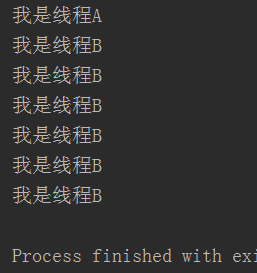- 2025年2月9日(数据分析_2)
Mason Lin
Python学习数据分析数据挖掘
散点图frommatplotlibimportpyplotaspltfrommatplotlibimportfont_manager#字体相关#字体font_path=r"C:\Windows\Fonts\msyh.ttc"my_font=font_manager.FontProperties(fname=font_path)x=list(range(31))x2=list(range(31,62
- 利用Beautiful Soup和Pandas进行网页数据抓取与清洗处理实战
傻啦嘿哟
pandas
目录一、准备工作二、抓取网页数据三、数据清洗四、数据处理五、保存数据六、完整代码示例七、总结在数据分析和机器学习的项目中,数据的获取、清洗和处理是非常关键的步骤。今天,我们将通过一个实战案例,演示如何利用Python中的BeautifulSoup库进行网页数据抓取,并使用Pandas库进行数据清洗和处理。这个案例不仅适合初学者,也能帮助有一定经验的朋友快速掌握这两个强大的工具。一、准备工作在开始之
- Python爬虫requests(详细)
dme.
Python爬虫零基础入门爬虫python
本文来学爬虫使用requests模块的常见操作。1.URL参数无论是在发送GET/POST请求时,网址URL都可能会携带参数,例如:http://www.5xclass.cn?age=19&name=dengres=requests.get(url="https://www.5xclass.cn?age=19&name=deng")res=requests.get(url="https://www
- 毕业论文如何降低AIGC率?
kexiaoya2013
AIGC论文笔记论文阅读
在Deepseek爆火的当下,AI生成内容已经渗透到各个领域,包括论文写作。如果你的论文使用了AI工具辅助写作,那么,如何降低AIGC率呢?一、控制使用比例将AI工具用于辅助性任务,如文献检索、语法检查、词汇替换等,而非核心内容的生成。论文的研究方法、数据分析、结论等核心部分应尽量手动完成。完全依赖AI生成论文会导致AI率过高,而将AI用于辅助性任务则能有效降低AI率。二、采用不同模型不同AI模型
- BP 神经网络在考古数据分析中的应用
fanxbl957
人工智能理论与实践神经网络数据分析人工智能
BP神经网络在考古数据分析中的应用摘要:本文深入探讨了BP神经网络在考古数据分析领域的应用。首先阐述了考古数据分析的重要性以及传统分析方法的局限性。随后详细介绍了BP神经网络的结构、原理与训练算法。通过丰富的代码示例展示了如何运用BP神经网络进行考古文物的分类鉴定、年代预测以及遗址空间分布分析等任务,涵盖数据预处理、网络构建、模型训练与评估等关键环节。分析了该应用的优势与局限性,并对其在考古数据分
- 市场波动中的数据分析与策略优化
QQ3990385023
数据分析区块链人工智能
市场波动中的数据分析与策略优化在市场交易中,价格的波动往往受到多种因素影响,包括资金流向、经济数据、政策调整等。如何利用数据分析优化交易策略,提升市场适应能力,是投资者需要重点关注的问题。借助科学的分析方法,结合技术指标,可以更精准地识别趋势,提高交易稳定性。一、市场数据分析的核心要素1.价格趋势分析市场价格的变动通常会形成一定的趋势,例如上涨趋势、震荡趋势或下跌趋势。通过均线(MA)等技术指标,
- 2024亚马逊数据分析!
KJYHS
数据分析数据挖掘
整体财务数据23净销售额:全年净销售额达6380亿美元,同比增长11%。净利润:全年净利润为592亿美元,较上年同期的304亿美元增长95%。经营活动现金流:经营活动现金流达1159亿美元,同比增加了36%。各业务板块数据AWS业务1第四季度营收:2024年第四季度,AWS业务实现营收288亿美元,同比增长19%;经营利润达106亿美元,同比增长34亿美元。广告业务5全年营收:2024年广告业务总
- Python中的 redis keyspace 通知_python 操作redis psubscribe(‘__keyspace@0__ ‘)
2301_82243733
程序员python学习面试
最后Python崛起并且风靡,因为优点多、应用领域广、被大牛们认可。学习Python门槛很低,但它的晋级路线很多,通过它你能进入机器学习、数据挖掘、大数据,CS等更加高级的领域。Python可以做网络应用,可以做科学计算,数据分析,可以做网络爬虫,可以做机器学习、自然语言处理、可以写游戏、可以做桌面应用…Python可以做的很多,你需要学好基础,再选择明确的方向。这里给大家分享一份全套的Pytho
- Python数据分析与可视化
程序媛小果
pythonpython数据分析开发语言
Python数据分析与可视化在数据驱动的商业世界中,数据分析和可视化成为了理解复杂数据集、做出明智决策的关键工具。Python,作为一种功能强大且易于学习的编程语言,提供了丰富的库和框架,使得数据分析和可视化变得简单高效。本文将探讨Python在数据分析和可视化中的应用,包括数据预处理、分析、以及如何通过可视化工具将数据洞察转化为可操作的策略。1.数据分析的重要性数据分析是提取数据中有用信息的过程
- 【数据分析】通过个体和遗址层面的遗传相关性网络分析
生信学习者1
数据分析数据分析数据挖掘r语言数据可视化
禁止商业或二改转载,仅供自学使用,侵权必究,如需截取部分内容请后台联系作者!文章目录介绍原理应用场景加载R包数据下载函数个体层面的遗传相关性网络分析导入数据数据预处理构建遗传相关性的个体网络对个体网络Nij进行可视化评估和选择最佳模型评估和选择最佳模型最佳模型进行总结拟合优度检验遗址层面的遗传相关性网络分析导入数据数据预处理构建遗址之间的遗传相关性网络可视化图条件边预测与模型评估总结系统信息介绍个
- 探索天气预警API:精准预测,守护安全
api
引言在当今这个快速变化的世界中,天气的波动直接影响着人们的日常生活、农业生产、交通出行乃至公共安全。为了有效应对各种极端天气事件,天气预警API应运而生,成为连接气象数据与公众服务的重要桥梁。本文将深入探讨天气预警API的工作原理、应用场景以及其对社会的积极影响。天气预警API的工作原理天气预警API基于先进的气象监测技术和大数据分析,通过收集全球范围内的气象卫星、雷达、地面观测站等数据源,进行实
- Redis 全方位解析:从入门到实战
kiss strong
redis数据库缓存
引言在当今互联网快速发展的时代,高并发、低延迟的应用场景越来越普遍。Redis,作为一款高性能的开源数据库,以其卓越的性能和灵活的功能,成为了许多开发者的首选工具。无论是在缓存、消息队列,还是在实时数据分析等领域,Redis都展现出了强大的能力。本文将从Redis的基本介绍、官网、安装、特性,到具体的存储类型、Java代码实例、SpringBoot整合,以及Redis的主要作用和应用场景,进行全面
- 深入解析:Tableau在数据可视化中的高级应用
Echo_Wish
实战高阶大数据信息可视化数据分析数据挖掘
深入解析:Tableau在数据可视化中的高级应用引言在大数据时代,数据可视化已成为数据分析中不可或缺的一部分。作为一款广受欢迎的数据可视化工具,Tableau以其强大的功能和灵活性,赢得了众多数据分析师的青睐。然而,许多人在使用Tableau时,仅停留在基本操作层面,未能充分发挥其潜力。本文将深入探讨Tableau的高级应用,展示其在复杂数据分析中的强大能力,并以具体实例说明其实际应用效果。数据预
- Anaconda 配置镜像源
猿代码_xiao
pythonpytorchpython深度学习
Anaconda镜像使用帮助Anaconda是一个用于科学计算的Python发行版,支持Linux,Mac,Windows,包含了众多流行的科学计算、数据分析的Python包。Anaconda安装包可以到https://mirrors.tuna.tsinghua.edu.cn/anaconda/archive/下载。TUNA还提供了Anaconda仓库与第三方源(conda-forge、msys2
- python爬虫--安装XPath Helper
S903784597
python爬虫开发语言
给chrome浏览器安装xpath插件。-从网盘下载xpath的插件文件链接:https://pan.baidu.com/s/1B85d5cLDyAz1xUQqmL3uug?pwd=3306提取码:3306-在chrome中输入chrome://extensions/打开扩展程序。-将从百度网盘中下载的xpath.zip文件直接拖到浏览器的扩展程序页面中-得到chrome插件,将插件开关开启,并且
- 使用Python爬虫实时监控行业新闻案例
海拥✘
python爬虫开发语言
目录背景环境准备请求网页数据解析网页数据定时任务综合代码使用代理IP提升稳定性运行截图与完整代码总结在互联网时代,新闻的实时性和时效性变得尤为重要。很多行业、技术、商业等领域的新闻都可以为公司或者个人发展提供有价值的信息。如果你有一项需求是要实时监控某个行业的新闻,自动化抓取并定期输出这些新闻,Python爬虫可以帮你轻松实现这一目标。本文将通过一个案例,带你一步一步实现一个简单的Python爬虫
- python panda下载_pandas python下载|Pandas for python v0.25.0官方版 v0.25.0官方版 - 哩咯下载站...
weixin_39647458
pythonpanda下载
Pandas是python的数据分析包,最初被作为金融数据分析工具而开发出来,提供pandas.whl包下载,有需要的赶快下载吧!软件介绍Pandas是python的一个数据分析包,最初由AQRCapitalManagement于2008年4月开发,并于2009年底开源出来,目前由专注于Python数据包开发的PyData开发team继续开发和维护,属于PyData项目的一部分。Pandas最初被
- Python爬虫-猫眼电影的影院数据
写python的鑫哥
爬虫案例1000讲python爬虫猫眼电影电影院数据采集
前言本文是该专栏的第46篇,后面会持续分享python爬虫干货知识,记得关注。本文笔者以猫眼电影为例子,获取猫眼的影院相关数据。废话不多说,具体实现思路和详细逻辑,笔者将在正文结合完整代码进行详细介绍。接下来,跟着笔者直接往下看正文详细内容。(附带完整代码)正文地址:aHR0cHM6Ly93d3cubWFveWFuLmNvbS8=目标:获取猫眼电影的影院数据1.项目场景介绍老规矩,我们还是通过接码
- 数据分析利器:COMEX外盘期货主力连续合约与月份合约研究方法
银河金融数据库
外盘期货高频历史行情数据下载数据分析区块链数据挖掘金融
数据分析利器:COMEX外盘期货主力连续合约与月份合约研究方法为了促进学习和研究,我们在此分享一部分匿名处理的外盘期货高频历史行情数据集。外盘期货分钟高频历史行情数据链接:https://pan.baidu.com/s/19zhe1CCpDM56amDKO2nMwQ?pwd=4wpq提取码:4wpq请注意,分享这些数据的目的是为了教育和研究,不构成任何投资建议。关键词:量化;量化;贵金属;计算能力
- Python从0到100(四):Python中的运算符介绍(补充)
是Dream呀
pythonjava数据库
前言:零基础学Python:Python从0到100最新最全教程。想做这件事情很久了,这次我更新了自己所写过的所有博客,汇集成了Python从0到100,共一百节课,帮助大家一个月时间里从零基础到学习Python基础语法、Python爬虫、Web开发、计算机视觉、机器学习、神经网络以及人工智能相关知识,成为学习学习和学业的先行者!欢迎大家订阅专栏:零基础学Python:Python从0到100最新
- Python从0到100(三十五):beautifulsoup的学习
是Dream呀
Dream的茶话会pythonbeautifulsoup学习
前言:零基础学Python:Python从0到100最新最全教程。想做这件事情很久了,这次我更新了自己所写过的所有博客,汇集成了Python从0到100,共一百节课,帮助大家一个月时间里从零基础到学习Python基础语法、Python爬虫、Web开发、计算机视觉、机器学习、神经网络以及人工智能相关知识,成为学习学习和学业的先行者!欢迎大家订阅专栏:零基础学Python:Python从0到100最新
- 阿里云 MaxCompute MaxQA 开启公测,解锁近实时高效查询体验
阿里云大数据AI技术
阿里云云原生MaxCompute大数据实时数仓
随着实时、近实时数据分析需求的持续增长,查询响应时间在现代数据分析和业务应用中变得越来越重要。为减少查询响应时间,提升数据效率,阿里云云原生大数据计算服务MaxCompute推出MaxQA(原MCQA2.0)查询加速功能,在独享的查询加速资源池的基础上,对管控链路、查询优化器、执行引擎、存储引擎以及缓存机制等多个环节进行全面优化,显著减少了查询响应时间,适用于BI场景、交互式分析以及近实时数仓等对
- 数据分析-56-深入理解假设检验的步骤和T检验的应用案例
皮皮冰燃
数据分析数据分析假设检验
文章目录1假设检验(HypothesisTesting)1.1假设检验的步骤1.1.1提出假设1.1.2选择显著性水平1.1.3选择检验统计量1.1.4计算检验统计量1.1.5确定临界值或p值1.2假设检验的类型1.2.1单尾检验(One-tailedtest)1.2.2双尾检验(Two-tailedtest)2T检验2.1单样本t检验2.2独立样本t检验2.3配对样本t检验3应用案例3.1单样本
- EBS 性能不足?从吞吐量到 IOPS,阿里云全方位优化
Anna_Tong
阿里云云计算存储加速吞吐量优化RAID配置云计算运维IOPS提升
在云计算环境中,存储性能对于业务稳定运行至关重要,尤其是数据库、大数据分析、AI计算等高IO需求的应用。然而,许多用户在使用EBS(弹性块存储)时,可能会遇到磁盘吞吐量或IOPS(每秒输入/输出操作数)不足的问题,导致应用响应变慢、数据处理延迟,甚至影响业务连续性。那么,是什么原因导致EBS性能瓶颈?如何优化吞吐量和IOPS以提升存储性能?阿里云又能提供哪些优化方案?本文将从存储架构、性能监控、优
- 供应链商业数据分析求职指南:技能点、工具包与业务模式全解析
xl.liu
数据分析数据挖掘
引言随着中国经济的快速发展,国内企业对供应链管理的关注度日益增加。为了应对激烈的市场竞争,企业纷纷寻求通过优化供应链来提高效率、降低成本并增强响应速度。在这个背景下,供应链商业数据分析(SupplyChainBusinessAnalytics)作为连接数据与决策的关键桥梁,逐渐成为企业不可或缺的一部分。对于有志于从事这一领域的专业人士而言,掌握必要的技能、熟悉先进的工具以及理解特定的业务模式是成功
- 使用Python抓取新闻媒体网站的最新头条与相关内容:深入的爬虫开发与数据分析实战
Python爬虫项目
2025年爬虫实战项目python爬虫数据分析数据挖掘人工智能开发语言
引言在互联网时代,新闻媒体网站是人们获取信息和了解世界的重要渠道。随着新闻的即时更新,获取最新头条并进行数据分析成为许多行业领域(如媒体、广告、舆情监测等)的重要需求。通过抓取新闻媒体网站的内容,我们不仅能获取各类新闻文章,还能为后续的数据分析、情感分析、舆情监控等提供基础数据。本篇博客将详细讲解如何使用Python编写一个爬虫,抓取新闻媒体网站的最新头条及其相关内容。我们将使用最新的技术栈,包括
- Python爬虫实战:获取笔趣阁图书信息,并做数据分析
ylfhpy
爬虫python爬虫数据分析
注意:以下内容仅供技术研究,请遵守目标网站的robots.txt规定,控制请求频率避免对目标服务器造成过大压力!1.环境准备与反爬策略pythonimportrequestsfrombs4importBeautifulSoupimportpandasaspdimportreimporttimeimportrandomfromfake_useragentimportUserAgent#需安装:pip
- 火山引擎 DataWind ChatBI 适配 DeepSeek-R1 及 DeepSeek-V3
大数据
2025年2月,火山引擎智能数据洞察DataWind旗下AI助手ChatBI宣布实现对DeepSeek-R1及DeepSeek-V3的适配。通过融合豆包、DeepSeek等主流大模型的先进能力,ChatBI正在为企业用户带来精准、智能的数据分析体验。作为Data+AI领域的先行者,DataWind一直致力于帮助业务达到最好的实践成果,DataWind对主流大模型始终保持高效的开放探索态度,融合前沿
- 生态碳汇涡度相关监测与通量数据分析
岁月如歌,青春不败
生态遥感数据分析碳汇生态科学涡度通量大涡模拟MATLAB
1、以涡度通量塔的高频观测数据,基于MATLAB:2、涡度通量观测基本概况:观测技术方法、数据获取与预处理等3、涡度通量数据质量控制:通量数据异常值识别与剔除等4、涡度通量数据缺失插补:结合气象数据进行通量数据缺失插补等5、涡度通量数据组分拆分:计算生态系统呼吸和总初级生产力等6、涡度通量数据可视化分析:绘制不同通量组分数据的时间变化等7、涡度通量与气象数据相关性:时间序列相关分析、回归分析等8、
- python数据分析一周速成1.先从查询开始吧
噼里啪啦噼酷啪Q
数据分析python数据分析CDA
写在前面众所周知,20%的知识点可以覆盖80%的使用场景。时间就是生命~~咱主打一个“用最小的成本,收获最大化”!有它了不仅不怕excel卡顿,还能实现懒人神器——办公自动化,你喝茶他干活,鼠标自由咯!快跟我来,感受一周速成的效率~~首先,安装python+编辑器(cmd下载和anaconda一个效果嗷):下载python:来官网DownloadPython|Python.org(建议用3.8~3
- apache ftpserver-CentOS config
gengzg
apache
<server xmlns="http://mina.apache.org/ftpserver/spring/v1"
xmlns:xsi="http://www.w3.org/2001/XMLSchema-instance"
xsi:schemaLocation="
http://mina.apache.o
- 优化MySQL数据库性能的八种方法
AILIKES
sqlmysql
1、选取最适用的字段属性 MySQL可以很好的支持大数据量的存取,但是一般说来,数据库中的表越小,在它上面执行的查询也就会越快。因此,在创建表的时候,为了获得更好的 性能,我们可以将表中字段的宽度设得尽可能小。例如,在定义邮政编码这个字段时,如果将其设置为CHAR(255),显然给数据库增加了不必要的空间,甚至使用VARCHAR这种类型也是多余的,因为CHAR(6)就可以很
- JeeSite 企业信息化快速开发平台
Kai_Ge
JeeSite
JeeSite 企业信息化快速开发平台
平台简介
JeeSite是基于多个优秀的开源项目,高度整合封装而成的高效,高性能,强安全性的开源Java EE快速开发平台。
JeeSite本身是以Spring Framework为核心容器,Spring MVC为模型视图控制器,MyBatis为数据访问层, Apache Shiro为权限授权层,Ehcahe对常用数据进行缓存,Activit为工作流
- 通过Spring Mail Api发送邮件
120153216
邮件main
原文地址:http://www.open-open.com/lib/view/open1346857871615.html
使用Java Mail API来发送邮件也很容易实现,但是最近公司一个同事封装的邮件API实在让我无法接受,于是便打算改用Spring Mail API来发送邮件,顺便记录下这篇文章。 【Spring Mail API】
Spring Mail API都在org.spri
- Pysvn 程序员使用指南
2002wmj
SVN
源文件:http://ju.outofmemory.cn/entry/35762
这是一篇关于pysvn模块的指南.
完整和详细的API请参考 http://pysvn.tigris.org/docs/pysvn_prog_ref.html.
pysvn是操作Subversion版本控制的Python接口模块. 这个API接口可以管理一个工作副本, 查询档案库, 和同步两个.
该
- 在SQLSERVER中查找被阻塞和正在被阻塞的SQL
357029540
SQL Server
SELECT R.session_id AS BlockedSessionID ,
S.session_id AS BlockingSessionID ,
Q1.text AS Block
- Intent 常用的用法备忘
7454103
.netandroidGoogleBlogF#
Intent
应该算是Android中特有的东西。你可以在Intent中指定程序 要执行的动作(比如:view,edit,dial),以及程序执行到该动作时所需要的资料 。都指定好后,只要调用startActivity(),Android系统 会自动寻找最符合你指定要求的应用 程序,并执行该程序。
下面列出几种Intent 的用法
显示网页:
- Spring定时器时间配置
adminjun
spring时间配置定时器
红圈中的值由6个数字组成,中间用空格分隔。第一个数字表示定时任务执行时间的秒,第二个数字表示分钟,第三个数字表示小时,后面三个数字表示日,月,年,< xmlnamespace prefix ="o" ns ="urn:schemas-microsoft-com:office:office" />
测试的时候,由于是每天定时执行,所以后面三个数
- POJ 2421 Constructing Roads 最小生成树
aijuans
最小生成树
来源:http://poj.org/problem?id=2421
题意:还是给你n个点,然后求最小生成树。特殊之处在于有一些点之间已经连上了边。
思路:对于已经有边的点,特殊标记一下,加边的时候把这些边的权值赋值为0即可。这样就可以既保证这些边一定存在,又保证了所求的结果正确。
代码:
#include <iostream>
#include <cstdio>
- 重构笔记——提取方法(Extract Method)
ayaoxinchao
java重构提炼函数局部变量提取方法
提取方法(Extract Method)是最常用的重构手法之一。当看到一个方法过长或者方法很难让人理解其意图的时候,这时候就可以用提取方法这种重构手法。
下面是我学习这个重构手法的笔记:
提取方法看起来好像仅仅是将被提取方法中的一段代码,放到目标方法中。其实,当方法足够复杂的时候,提取方法也会变得复杂。当然,如果提取方法这种重构手法无法进行时,就可能需要选择其他
- 为UILabel添加点击事件
bewithme
UILabel
默认情况下UILabel是不支持点击事件的,网上查了查居然没有一个是完整的答案,现在我提供一个完整的代码。
UILabel *l = [[UILabel alloc] initWithFrame:CGRectMake(60, 0, listV.frame.size.width - 60, listV.frame.size.height)]
- NoSQL数据库之Redis数据库管理(PHP-REDIS实例)
bijian1013
redis数据库NoSQL
一.redis.php
<?php
//实例化
$redis = new Redis();
//连接服务器
$redis->connect("localhost");
//授权
$redis->auth("lamplijie");
//相关操
- SecureCRT使用备注
bingyingao
secureCRT每页行数
SecureCRT日志和卷屏行数设置
一、使用securecrt时,设置自动日志记录功能。
1、在C:\Program Files\SecureCRT\下新建一个文件夹(也就是你的CRT可执行文件的路径),命名为Logs;
2、点击Options -> Global Options -> Default Session -> Edite Default Sett
- 【Scala九】Scala核心三:泛型
bit1129
scala
泛型类
package spark.examples.scala.generics
class GenericClass[K, V](val k: K, val v: V) {
def print() {
println(k + "," + v)
}
}
object GenericClass {
def main(args: Arr
- 素数与音乐
bookjovi
素数数学haskell
由于一直在看haskell,不可避免的接触到了很多数学知识,其中数论最多,如素数,斐波那契数列等,很多在学生时代无法理解的数学现在似乎也能领悟到那么一点。
闲暇之余,从图书馆找了<<The music of primes>>和<<世界数学通史>>读了几遍。其中素数的音乐这本书与软件界熟知的&l
- Java-Collections Framework学习与总结-IdentityHashMap
BrokenDreams
Collections
这篇总结一下java.util.IdentityHashMap。从类名上可以猜到,这个类本质应该还是一个散列表,只是前面有Identity修饰,是一种特殊的HashMap。
简单的说,IdentityHashMap和HashM
- 读《研磨设计模式》-代码笔记-享元模式-Flyweight
bylijinnan
java设计模式
声明: 本文只为方便我个人查阅和理解,详细的分析以及源代码请移步 原作者的博客http://chjavach.iteye.com/
import java.util.ArrayList;
import java.util.Collection;
import java.util.HashMap;
import java.util.List;
import java
- PS人像润饰&调色教程集锦
cherishLC
PS
1、仿制图章沿轮廓润饰——柔化图像,凸显轮廓
http://www.howzhi.com/course/retouching/
新建一个透明图层,使用仿制图章不断Alt+鼠标左键选点,设置透明度为21%,大小为修饰区域的1/3左右(比如胳膊宽度的1/3),再沿纹理方向(比如胳膊方向)进行修饰。
所有修饰完成后,对该润饰图层添加噪声,噪声大小应该和
- 更新多个字段的UPDATE语句
crabdave
update
更新多个字段的UPDATE语句
update tableA a
set (a.v1, a.v2, a.v3, a.v4) = --使用括号确定更新的字段范围
- hive实例讲解实现in和not in子句
daizj
hivenot inin
本文转自:http://www.cnblogs.com/ggjucheng/archive/2013/01/03/2842855.html
当前hive不支持 in或not in 中包含查询子句的语法,所以只能通过left join实现。
假设有一个登陆表login(当天登陆记录,只有一个uid),和一个用户注册表regusers(当天注册用户,字段只有一个uid),这两个表都包含
- 一道24点的10+种非人类解法(2,3,10,10)
dsjt
算法
这是人类算24点的方法?!!!
事件缘由:今天晚上突然看到一条24点状态,当时惊为天人,这NM叫人啊?以下是那条状态
朱明西 : 24点,算2 3 10 10,我LX炮狗等面对四张牌痛不欲生,结果跑跑同学扫了一眼说,算出来了,2的10次方减10的3次方。。我草这是人类的算24点啊。。
然后么。。。我就在深夜很得瑟的问室友求室友算
刚出完题,文哥的暴走之旅开始了
5秒后
- 关于YII的菜单插件 CMenu和面包末breadcrumbs路径管理插件的一些使用问题
dcj3sjt126com
yiiframework
在使用 YIi的路径管理工具时,发现了一个问题。 <?php
- 对象与关系之间的矛盾:“阻抗失配”效应[转]
come_for_dream
对象
概述
“阻抗失配”这一词组通常用来描述面向对象应用向传统的关系数据库(RDBMS)存放数据时所遇到的数据表述不一致问题。C++程序员已经被这个问题困扰了好多年,而现在的Java程序员和其它面向对象开发人员也对这个问题深感头痛。
“阻抗失配”产生的原因是因为对象模型与关系模型之间缺乏固有的亲合力。“阻抗失配”所带来的问题包括:类的层次关系必须绑定为关系模式(将对象
- 学习编程那点事
gcq511120594
编程互联网
一年前的夏天,我还在纠结要不要改行,要不要去学php?能学到真本事吗?改行能成功吗?太多的问题,我终于不顾一切,下定决心,辞去了工作,来到传说中的帝都。老师给的乘车方式还算有效,很顺利的就到了学校,赶巧了,正好学校搬到了新校区。先安顿了下来,过了个轻松的周末,第一次到帝都,逛逛吧!
接下来的周一,是我噩梦的开始,学习内容对我这个零基础的人来说,除了勉强完成老师布置的作业外,我已经没有时间和精力去
- Reverse Linked List II
hcx2013
list
Reverse a linked list from position m to n. Do it in-place and in one-pass.
For example:Given 1->2->3->4->5->NULL, m = 2 and n = 4,
return
- Spring4.1新特性——页面自动化测试框架Spring MVC Test HtmlUnit简介
jinnianshilongnian
spring 4.1
目录
Spring4.1新特性——综述
Spring4.1新特性——Spring核心部分及其他
Spring4.1新特性——Spring缓存框架增强
Spring4.1新特性——异步调用和事件机制的异常处理
Spring4.1新特性——数据库集成测试脚本初始化
Spring4.1新特性——Spring MVC增强
Spring4.1新特性——页面自动化测试框架Spring MVC T
- Hadoop集群工具distcp
liyonghui160com
1. 环境描述
两个集群:rock 和 stone
rock无kerberos权限认证,stone有要求认证。
1. 从rock复制到stone,采用hdfs
Hadoop distcp -i hdfs://rock-nn:8020/user/cxz/input hdfs://stone-nn:8020/user/cxz/运行在rock端,即源端问题:报版本
- 一个备份MySQL数据库的简单Shell脚本
pda158
mysql脚本
主脚本(用于备份mysql数据库): 该Shell脚本可以自动备份
数据库。只要复制粘贴本脚本到文本编辑器中,输入数据库用户名、密码以及数据库名即可。我备份数据库使用的是mysqlump 命令。后面会对每行脚本命令进行说明。
1. 分别建立目录“backup”和“oldbackup” #mkdir /backup #mkdir /oldbackup
- 300个涵盖IT各方面的免费资源(中)——设计与编码篇
shoothao
IT资源图标库图片库色彩板字体
A. 免费的设计资源
Freebbble:来自于Dribbble的免费的高质量作品。
Dribbble:Dribbble上“免费”的搜索结果——这是巨大的宝藏。
Graphic Burger:每个像素点都做得很细的绝佳的设计资源。
Pixel Buddha:免费和优质资源的专业社区。
Premium Pixels:为那些有创意的人提供免费的素材。
- thrift总结 - 跨语言服务开发
uule
thrift
官网
官网JAVA例子
thrift入门介绍
IBM-Apache Thrift - 可伸缩的跨语言服务开发框架
Thrift入门及Java实例演示
thrift的使用介绍
RPC
POM:
<dependency>
<groupId>org.apache.thrift</groupId>


